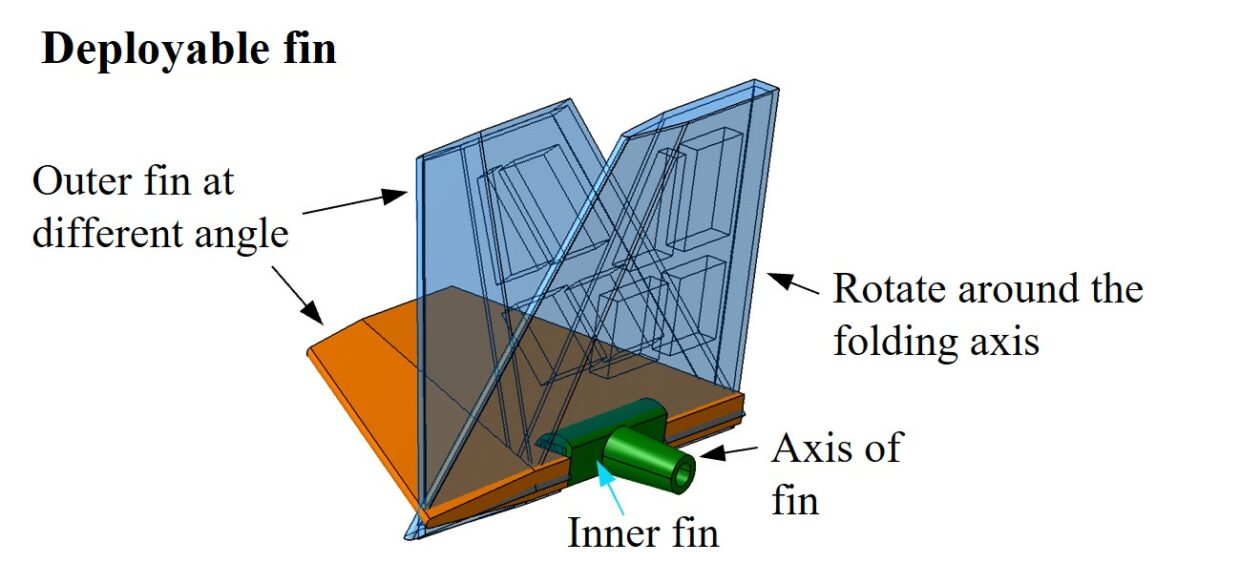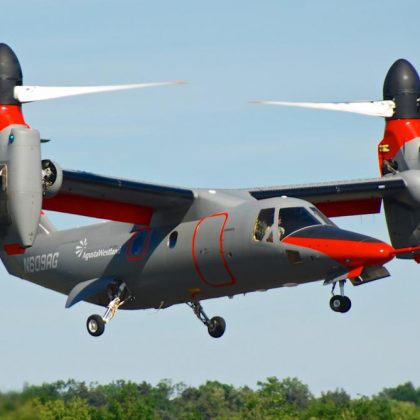Design-oriented dynamic model of deployable fin under time-varying elevated temperature environment
The Aeronautical Journal April 2024 Vol 128 No 1322
Morphing aircraft, a new concept of vehicle with the ability to change its geometry during flight, has interested researchers and designers over the years as this reduces the design compromises required. Compared with the traditional fixed-form aircraft, the morphing aircraft has significant advantages in many aspects: firstly, the deformation structures are used to improve the aerodynamic characteristics, reducing the flight energy consumption, and expanding the flight envelope; secondly, active deformation technologies are used to enhance the control ability, increasing the maneuverability. The design of a morphing aircraft involves multidisciplinary and complex coupling problems such as aerodynamics, structure, heat prevention, flight control, materials, stealth, etc., and its flight performance is a comprehensive result of the mutual influence and synergistic constraints between different disciplines and different objectives.
Folding configuration, as a class of the morphing modes, has been developed and extensively utilized in various aeronautic vehicle industries. The division of the wing or fin into separate inboard and outboard segments in the span-wise direction of the out-of-plane deployable configuration presents advantages of low width dimension of the aircraft and thus reduce storage and transportation space. Hinged–locked structure is the core subcomponent of the deployable fin that exhibits typical nonlinear mechanical properties due to the existence of clearance. Local behavior caused by assembly clearance significantly affects structural dynamic properties of the whole airfoil.
In previous studies, spring elements are used to simulate the connection stiffness of hinged–locked structures. The expression of stiffness is mainly based on artificial assumptions, and the stiffness value is tuned through ground vibration test results or model updating technology for a specific system. However, the design-oriented nonlinear mechanical model that can reflect the relationship of geometric dimension, physical characteristics, and connection stiffness under ultrahigh temperature requires further investigation. Specifically, aeroelasticity properties or control characteristics of the deployable fin may fail to meet the design requirements under a specific service environment. If the mechanical model describing physical characteristics of the connecting structure is unknown, then the improvement and redesign of the structure can be impossible. In addition to this limitation, the temperature of a real deployable fin is multidimensionally distributed under the condition of maneuvering flight. Notably, connection stiffness is highly dependent on temperature. Relevant studies typically ignore the influence of high-temperature conditions and clearances on the connection stiffness of the folding mechanism in real high-speed vehicles.

Because of the increased complexity of the problem, the following studies are of great significance to guide the design of folding fin: 1) improving the description and prediction ability of the mechanical theoretical model; 2) calculating the connection stiffness of the hinged–locked structure of the deployable fin, which is exposed to the time-varying aerodynamic heating; and 3) assessing whether frequency characteristics of the deployable fin are still within the effective design range under high-temperature environment given the increased complexity of the problem.
In the paper, “Design-oriented dynamic model of deployable fin under time-varying elevated temperature environment”, a practical semi-analytical model based on Hertz contact theory and ESDU-78035 model is proposed. High-temperature connection stiffness of local hinged–locked mechanisms is investigated. Material property degradation and clearance variation caused by thermal expansion are comprehensively considered and quantified in this model. Vibration characteristics of the assembled deployable fin are then solved using finite element method (FEM). The real-time evolutionary process of thermal mode of the fin is discussed. The simulation results of this study demonstrate that the relative error of structure temperature between the sequential approach and fully coupled simulations is less than 6.98%. The connection stiffness (slope of the load-displacement curve) of the folding mechanism under high temperature conditions decreases by 3.52%, and the variation is mainly caused by the degradation of the elastic modulus of the material, while the clearance change due to the thermal expansion has no significant effect on the slope. The method and results in this paper can provide a theoretical basis for the analysis of thermal vibration characteristics of the deployable fin for high-speed vehicles. The framework of this investigation provides an effective design and evaluation criterion for heat insulation systems of deployable mechanisms and offers a reference for explaining anomalies of thermal modal experiments.
Design-oriented dynamic model of deployable fin under time-varying elevated temperature environment H.Y. Ren, Y. Wang, L. Wang, J.B. Zhou, H.J. Chang, Y.P. Cai and B. Lei
This open access paper appears in Volume 128 Issue 1322 of The Aeronautical Journal.
The Royal Aeronautical Society is the world’s only professional body dedicated to the entire aerospace community. Established in 1866 to further the art, science and engineering of aeronautics, the Society has been at the forefront of developments ever since.
www.aerosociety.com | National Aerospace Library catalogue & e-books
Book reviews covering academic, scientific and technical books covering aeronautical engineering and topics relating to it can be found here: www.aerosociety.com/news-expertise/national-aerospace-library/book-reviews
The Aeronautical Journal has, for over a century, been the UK’s leading scientific and technical aeronautics Journal and is the world’s oldest Aerospace Journal that remains in production. Published monthly, The Aeronautical Journal draws upon the expertise and resources of The Royal Aeronautical Society providing a world-wide forum for authors from the UK and overseas. Research papers are solicited on all aspects of research, design and development, construction and operation of aircraft and space vehicles. Papers are also welcomed which review, comprehensively, the results of recent research developments in any of the above topics.







